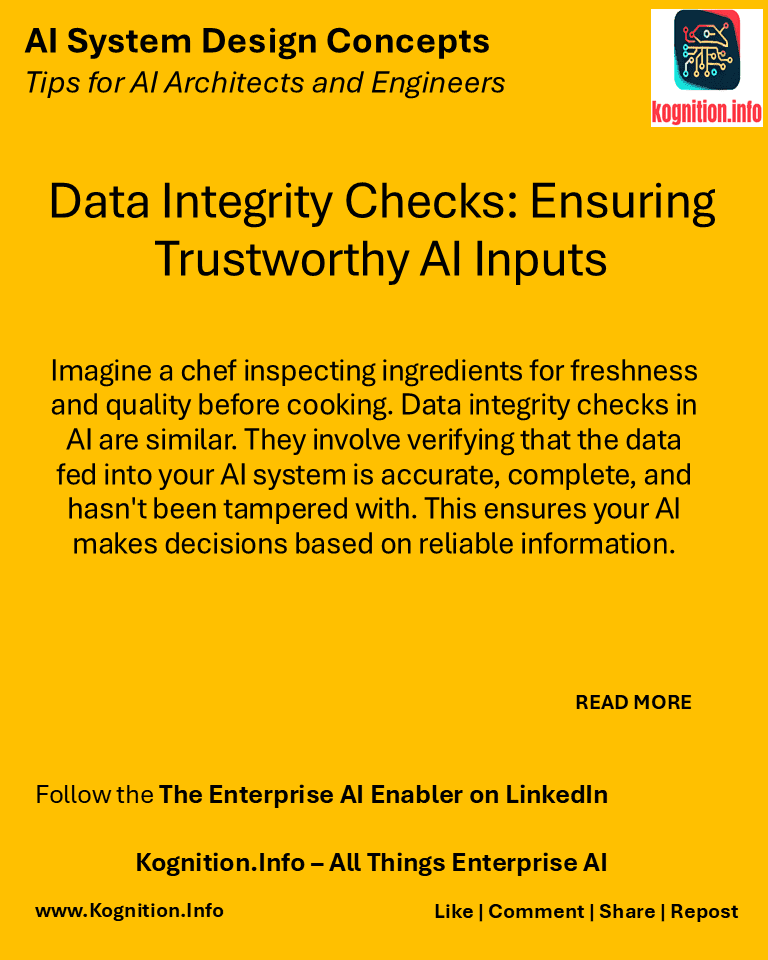
Imagine a chef inspecting ingredients for freshness and quality before cooking. Data integrity checks in AI are similar. They involve verifying that the data fed into your AI system is accurate, complete, and hasn’t been tampered with. This ensures your AI makes decisions based on reliable information.
Use cases:
- Preventing data poisoning attacks: Detecting malicious attempts to inject corrupted data into training datasets.
- Identifying data entry errors: Catching human errors or inconsistencies in data collection.
- Ensuring data consistency: Verifying that data from different sources is compatible and aligned.
How?
- Validate data types and formats: Check that data conforms to expected formats and data types.
- Check for missing values: Identify and handle missing data appropriately.
- Detect outliers and anomalies: Identify data points that deviate significantly from the norm, which may indicate errors or inconsistencies.
- Implement checksums and hashes: Use checksums or cryptographic hashes to verify data integrity during transmission or storage.
- Establish data provenance: Track the origin and history of data to ensure its authenticity and reliability.
Benefits:
- Improved model accuracy: Ensures that AI models are trained and make predictions based on trustworthy data.
- Increased reliability: Reduces the risk of errors or biases caused by corrupted or inaccurate data.
- Enhanced security: Protects against data poisoning attacks and other malicious attempts to manipulate data.
Potential pitfalls:
- Defining integrity rules: Establishing clear and comprehensive rules for data integrity can be challenging.
- Computational cost: Performing extensive data integrity checks can add computational overhead.
- False positives: Overly strict integrity checks can lead to false positives, rejecting valid data.
